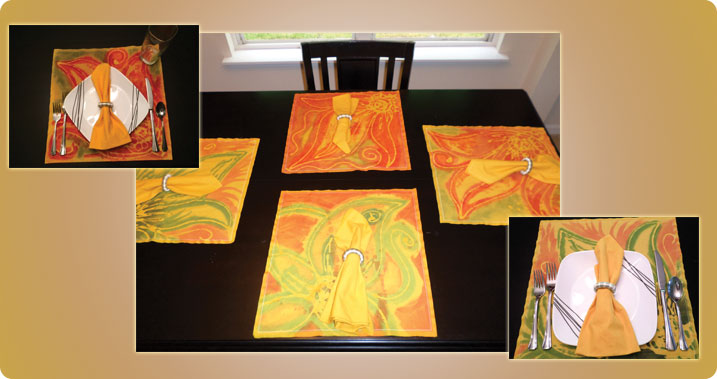Elmer's Batik Place Settings

Family dinners are more important than you might think. Research shows that kids and teens who share family dinners 3 or more times per week perform better academically. More frequent family dinners are related to fewer emotional and behavioral problems, greater emotional well-being, more trusting and helpful behaviors towards others and higher life satisfaction.
Turn the chore of setting the table into a fun family activity with colorful placemats and napkins. Teach children the proper place setting and promote good table manners, responsibility, and family time with an inviting dinner table that you create together.
Cognitive Benefits:
Fine motor skills
Visual and spatial skills
Figurative language
Social-Emotional Benefits:
Risk-free construction and creative expression
Promotes novel thinking and constructing
Family Advantages:
Encourages family dinner time and promotes positive social behaviors
Supplies Needed
White or pre-dyed 100% cotton fabric
Rit Dye (liquid)
Elmer's® School Glue Gel (blue)
Foam sponge brushes (various sizes)
Plastic table cover
Plastic wrap
1-cup containers
Rubber stamps or stencils (optional)
Instructions
Prep, create, and clean-up time:
- 2-3 hours
- 24 hours
1
Overlap sheets of plastic wrap so they are slightly larger than the fabric to be dyed. Place fabric on top of plastic wrap.
2
Using Elmer's® School Glue Blue Gel, apply your design to fabric. You may pour the glue directly on the fabric, or use stamps or stencils to create a design.
- For stamps, use a brush to apply the glue gel evenly to the stamp before pressing it onto the fabric. Clean out open areas in the stamp with end of brush to remove any excess glue.
- For stencils, use Elmer's Spray Adhesive to adhere stencil to fabric. Then using a stencil brush, apply the glue gel to open areas on the stencil.
- For hand drawing designs, use the bottle nozzle to create designs or letters directly on the fabric.
3
Wearing latex gloves, shake the Rit® dye bottles before pouring. Measure and mix 1 teaspoon liquid dye or 2 teaspoons powder dye with 1/2 cup very hot tap water; stir well. Pour dye and water into 1 cup containers. Add more dye for more intense colors or use more water for lighter colors.
4
Use foam sponge brushes to apply one or more dye colors around resist-created designs.
5
Cover the batik-dyed fabric with plastic wrap and seal the edges. Cover bottom of microwave with paper towels to protect against spills and place plastic-wrapped fabric in the microwave. Set microwave for 1-2 minutes. DO NOT LEAVE UNATTENDED. Watch carefully to be sure plastic wrap does not melt and fabric does not scorch.
6
Use pot holders to carefully remove plastic-wrapped fabric from microwave. THE PLASTIC WRAP WILL BE HOT. Wait a few minutes to allow the plastic wrap to cool.
7
Remove plastic wrap and rinse fabric in cool water until the water runs clear of dye. Wash again in warm water with mild detergent. Rinse and air or machine dry.
The History of Batik
The dyeing technique of batik originated in the Indonesian island, Java. Batik is made by drawing designs on fabric which resists dye creating inverse designs of color. Even young children will delight in the process and final product of their batik designs. Traditional batik processes use hot wax to create the designs. The wax acts as a resist preventing the dye from penetrating the fabric and creating an inverse color design. However, Elmer's School Glue Blue Gel is washable and a faster, easier method for children than hot wax while delivering the same great results. Get creative with batik on tote bags, hats, t-shirts, or any cotton fabric item. The possibilities are endless!
Start with a Story!
The Table Sets Itself by Ben Clanton is a delicious story that transforms a common task into a humorous adventure. The fun story, whimsical illustrations, and clever puns provide the perfect springboard to teach children the proper place settings and commonly used figurative language. Perfect for any child that groans when asked to set the table!
Additional Literature Suggestions:
- Whoopi's Big Book of Manners by Whoopi Goldberg
- Don't Behave Like You Live in a Cave by Elizabeth Verdick











